![]()
Brought to you by CustomerIQ, the AI platform that seamlessly integrates with your CRM, help desk, and messaging apps to automate CRM data entry, extract valuable insights, and provide the whole GTM team with data they need to close deals faster. Learn more here.
Jason Fried and David Heinemeier Hansson, co-founders of 37signals found themselves at a crossroads. They had long been champions of simplicity and user empowerment, having created popular products like Basecamp and HEY. Yet, as the software industry increasingly embraced the subscription-based SaaS model, they felt a growing discontent with the status quo.
The duo reminisced about the early days of software, when users would pay once, install a program, and truly own it. This nostalgia sparked an idea: what if they could bring back the simplicity and ownership of those early days? What if they could create a new model where software wasn’t rented but owned outright by those who purchased it?
As they discussed this vision, they realized the potential impact it could have. The SaaS model, while beneficial for some, had become a burden for many businesses, locking them into endless cycles of payments for software they never truly owned. Jason and David saw an opportunity to lead the industry into a new era, one where customers had more control and autonomy.
Thus, the concept of ONCE was born. This new initiative would offer software products that users could buy once and own forever. They envisioned a model where the code was transparent, allowing users to host it themselves, free from the constraints of recurring fees and external control.
Excited by the possibilities, Jason and David began to lay the groundwork for ONCE. They knew it wouldn’t be easy, as it challenged the prevailing norms of the tech industry. However, they were driven by a desire to empower users and simplify the software experience.
As they prepared to launch their first product under the ONCE umbrella, they felt a renewed sense of purpose. They were not just creating software; they were crafting a new narrative for the industry, one that prioritized user ownership and simplicity. With ONCE, Jason and David were ready to lead the charge into a post-SaaS era, confident that their vision would resonate with those seeking a more straightforward and empowering software experience
I was so excited to learn that Mike Belsito, cofounder at Product Collective and our collaborators here at Behind the Product, sat down with Jason Fried to learn more about launching ONCE and its family of products.
Here’s what we learned:
- The founding story of the ONCE brand
- How they made the decision to start with Campfire as the first ONCE product
- The future of ONCE-style software purchasing
- Key learnings in pricing
- Hard-won lessons for product builders today
Please enjoy Mike’s conversation with Jason Fried, CEO at 37signals.
Tell us the “why” behind Once
One of the pivotal moments was when BMW announced they were switching heated seats to a subscription model. I remember talking with David about it, like, “What? Hold on a second. You spend around 60 grand on a car, and now you need to pay 15 bucks a month just to heat your seat? This is insane.” That moment made it clear that something was fundamentally broken in the way products were being offered.
Subscription as a business model is perfectly fine—we still have subscription products and believe in the idea—but when everything starts moving towards subscriptions, something’s off. It’s like when everyone’s buying the same stock, you know something’s up.
David and I had several conversations about this general shift. We were moving away from the cloud services we were previously paying for and began running our own solutions. Around this time, we achieved some technological breakthroughs that made it significantly easier to host software yourself. Before, it was a hassle requiring an IT person and a lot of configurations. But we figured out a way to streamline it—essentially, you’d just paste one command emailed to you into a terminal, and you’d be all set.
So, these observations about the world, technological frustrations, and a few internal breakthroughs led us to the idea of building something self-hosted. While we didn’t know at the time it would turn into what it is today, we knew we wanted to create something in this direction. That’s kind of the origin story of Once.
Why did you decide to bring Campfire back as a standalone product?
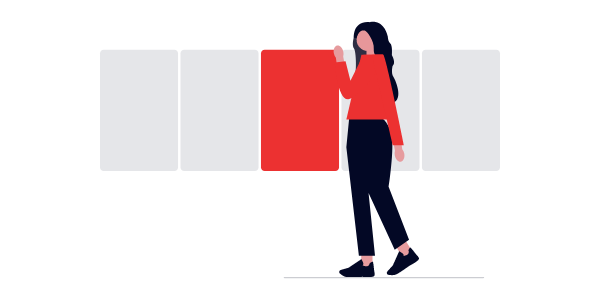
We had some friends who use Slack, and we were just curious about how much they were paying for it. When we heard it was something like six grand a month, we were shocked. They have a lot of employees, but still, we were taken aback by the amount. I started asking this on Twitter, “How much did you pay for it?” and I was just shocked to see how much money people are spending on something that is free otherwise.
The thing is, I know Slack does more than just chat, but fundamentally, chatting isn’t a high-technology product. WhatsApp is free, Signal is free, iMessage is free, Android Messenger is free. Facebook, these things are free. So we recognized a problem: why are people paying ridiculous amounts of money for what is fundamentally free elsewhere?
We started looking at chat as a commodity in businesses today. Typically, when there’s a commodity in an industry, prices come way down. Commodities are essentially identical products that are generic enough. We realized chat could be a wonderful place to start because it’s still too expensive despite being around for a long time. There are only a few chat products, and they’re all high-priced. We knew how to make something like this, and it was a concept tight enough to be a standalone product.
So, it was a confluence of various factors, but the main catalyst was realizing how much people were paying for business chat software, which made no sense to me at all. It was and still is outrageous.
Tell us more about your philosophy around software buying
The nice thing about owning software this way is you get to decide if you want it or not. There are no dependencies or contingencies on us. You can modify it to your own use—whatever you want to do, it’s yours after you buy it. Of course, there are some license restrictions, like you can’t resell it or base other products on it, but you can use it for your personal or commercial needs however you see fit.
A lot of people in the industry now grew up with software as a service (SaaS) and can’t imagine any other way to buy software. They’re used to paying a subscription fee forever, with all their data tied up in a company that could cut them off if they don’t pay their bill or goes out of business. I believe there should be an alternative to that model. We haven’t seen a different approach for over a decade, maybe even longer, so we thought it was a good idea to bring this concept back. While software you buy, install, and run yourself still exists for desktop computers, it’s less common at the business level, where everything has shifted towards services. We’re not inventing anything new; we’re just reintroducing this ownership model into the current market.
How do you see this playing out?
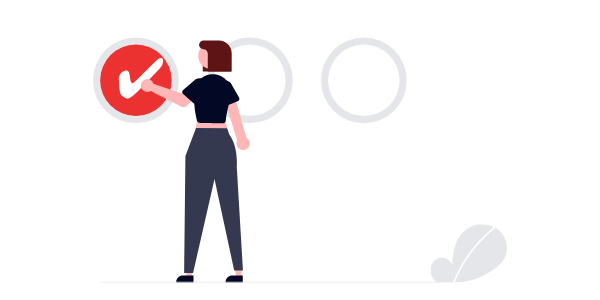
It’s definitely a barrier for some, I mean we’re early. We’re very early on this. This is sort of our general pattern. We’re typically very early to things and sometimes that works out well and sometimes it doesn’t. It worked out well for SaaS because we got a really early head start on Basecamp. We were early on remote work, and we were early on some other stuff, but we were also probably too early on the original version of Campfire way back in 2006. At that time, group chat just wasn’t a thing. I remember having to shove it down people’s throats. They didn’t understand why you would ever want to chat with your company. And, of course, Slack came around seven or eight years later, and then everyone wanted to do it. So we were way early on that, even though they had a great product too.
I feel like if Slack had launched when we launched Campfire, it wouldn’t have taken off either. The timing just wasn’t right. So we’re early here as well on installable software, and time will tell how it all plays out. We’ve sold thousands of copies so far of Campfire, and we’re very happy with that as an initial start. It has been a really wonderful testing ground for us to try some new ideas and build some new technology. It’s also a foundation for future products that we’re going to be building.
Right now, it wouldn’t pay the bills, it wouldn’t keep the lights on, and it wouldn’t pay 70 people’s salaries or anything like that yet. But it wasn’t intended to do that just a few months in. It was more about seeing if there was any interest in this whatsoever, and clearly, there is. So we know there’s something there. Whether or not it’s viable to run the whole company on a model like that is yet to be seen. As of now, it’s not. But again, it wasn’t meant to be. It’s funny—this is the way it used to be, and it’s funny how you could be early again to the way it used to be. I think we’ll see how that plays out.
What were some of the learnings along the way to launching this first ONCE product?
We didn’t know that we could ultimately make it as easy as we made it to install the products. It’s incredibly easy and almost ridiculously easy, but we didn’t know we could get there. We were hoping we could and it turned out we eventually could, but we had to work through some ideas to make that work. We are using a different database system than we’re used to historically, and there were a lot of things we hadn’t worked with before. We didn’t know if we could support installation on all sorts of different environments or if it was just going to require a very specific specification. Turns out you can install it on a whole bunch of things including a Raspberry Pi. You can go buy a Raspberry Pi and put Campfire on there and support something like 250 concurrent chatters, which is pretty wild.
We also had some early discussions about what we wanted to make. Do we want to break new ground in this chat product style or do we just want to nail the basics? We decided to start with the basics initially. There were other ideas about dealing with communication software that we didn’t incorporate into this product, and we weren’t sure how far we wanted to go.
One thing we were sure about initially, but didn’t know how to achieve, was the goal to make universal software. We wanted to create software with no words in it whatsoever, so it would be immediately usable in every market around the world without needing translation. The icons and UI had to be so intuitive that anyone would understand it, much like chat interfaces which are universally recognizable. In the end, we had to include a handful of words, which was frustrating, but we came up with a novel way to do on-demand translations for those who needed it.
Another big unknown was the updates. How were we going to update the software? We eventually came up with a solution to auto-update every night at 2:00 AM unless turned off by the user, ensuring the software was always up-to-date without manual downloads. This turned out to be a significant part of the product’s appeal.
We were also uncertain about the price, whether people would buy it, or if they would pirate it. The code included is open, so while you pay for the product, the code is freely accessible. We didn’t know how people would react to that. But in the end, most of the things you worry about never happen anyway. It’s a good reminder that you have to find a comfort level with the unknowns, launch, and see what happens.
What surprised you about the launch of Campfire under the Once family?
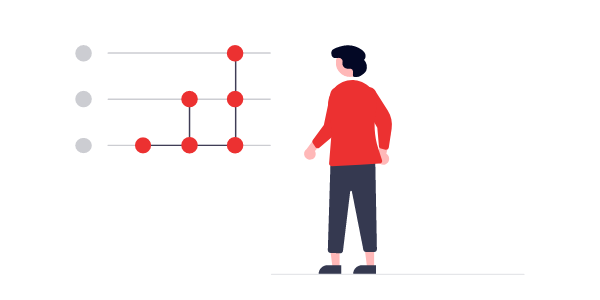
How innovative and resourceful the Small Bets community turned out to be. They switched from Discord to Campfire and essentially forked it completely, building on top of it in a very significant way. They’ve added numerous features that we don’t have and done a bunch of things with it that we hadn’t even thought of. Some of their additions are really great ideas, so good that we might want to incorporate them back into our product. Others are very specific to their needs.
What truly caught me off guard was not just the ingenuity but the efficiency of their approach. For just $300, they managed to save themselves six months of development time. So, in essence, we sold them six months of development for $300. They began with a foundational chat product and built upon it, which was just wonderful to see.
It’s incredibly smart and clever. I wasn’t expecting anyone to take this route. There have been some other inquiries too, from people wanting to replicate what Small Bets did. My response has been encouraging but clear: they have to be willing to put in the work, just like Small Bets did. Their approach was a really smart move and quite a surprise to me. I’d love to see more people do that because it also gave me ideas about the potential for building commercial products that are fully functional yet designed to be modified.
It was like selling a kit car or a prefab shed, where you get a solid base and then you can modify it as you wish. This concept of selling a headstart is intriguing. We’re offering something robust, fully functional, but also modifiable, essentially giving people a bundle of constructed raw materials. You get a great product out of the box, but if you want to add windows or a ceiling fan to your ‘shed,’ you can. You didn’t have to build the shed; it came ready, and now you can personalize it. Seeing what Daniel and his team did at Small Bets made me ponder if there’s a viable business model here. It might just be, at the very least, it’s a very interesting idea.
Will this be the de facto model for 37signals as you continue to launch products?
We’re working on two more products right now and we’re thinking about what models make sense. It could be one, the other, or both. It’s possible that maybe we can make something that would work both ways. I don’t really know. There’s a lot of complexity involved with that because there are many things you take for granted with a service, like even simple things such as notification systems and email. If you want to blast an email notification to somebody, the service model is simple, but in the ONCE model, you also have to install a mail server, and that’s a more complicated level of installation. So you’ve got to configure that. There are some complications there, but we’re going into these products with open eyes. We’re just going to build the best things we can and as we get deeper into them, we’ll start to decide which way we’re going to go or if we’ll go both ways and we’ll see what happens. Maybe there’s a third model. I don’t know.
I mean, there just might be other things that come about. I’ve always been curious about a once model service where you pay once for a service and then it’s yours. Or once you’ve paid us enough, like let’s say you paid us $5,000 over the course of using Basecamp or whatever, if you hit the $5,000 mark, it’s yours. We’ll never charge you again. Now, we don’t do this currently, but it’s something I’ve thought about. Maybe we could do something like that where once you’ve paid enough, we’re just happy to have you forever at that point. Again, we don’t do this, but there are other possibilities here that we could explore over time.
I’ve always been interested in business models. Back when we were a design firm, we did this thing called 37 Express, which was a one-page redesign. Instead of redesigning someone’s entire site, it was just one page in one week for $3,500. Fixed price, fixed scope, fixed timeframe, very short. You want another page? Cool. You want us to just look at your search results page? Cool, we’ll do that. I want to stay curious and continue exploring these kinds of ideas.
Are you getting any blowback from other founders who are selling the traditional SaaS model?
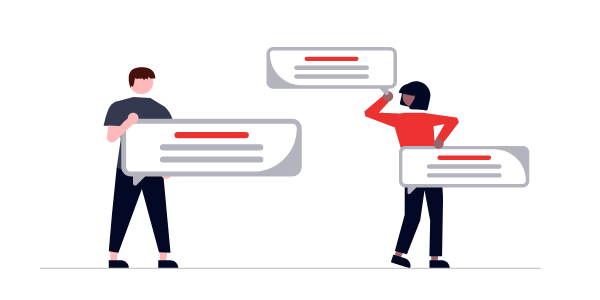
Well, I mean, there are different business models. We sell Basecamp with a limiter on the price. You can’t pay us more than $299 a month, period. You could have 9,000 employees using Basecamp, and we’re only going to charge you $299 a month max. So, you can still have a wonderful business and still cap your prices at some point. We used to be $99 a month for unlimited users. Now, we have a per-user plan and a max plan. So, there are other ways to do this.
But, I mean, charging thousands of dollars a month, or even high hundreds, or low thousands—my point of view is that software should be affordable. Out of all things, software should be among the most affordable goods in the world, like it’s software. There’s no raw material costs. I mean, there’s time to build the thing, right? But there’s almost no marginal cost after you’ve built it.
Of course, you have to support it, which is where services become expensive, but I just find it to be outrageous. I don’t think software should be expensive. I have heard from some founders, but I said, “Don’t worry, you don’t have anything to worry about right now. It’s early days, and we’ll see what happens.” And hey, if it turns out to be a viable business model, like a really viable business model, you have to sell at this price point—a $299 price point, which is what Campfire’s price is—you have to sell a lot of them to make it viable to really run a business. But if it does, if it is, you can convert your product to that or offer a flavor of an installable version.
This is hopefully shining a light on what’s possible. It’s not just for us. Maybe this is a viable model for others too. We’ll be the guinea pigs. We’ll try it out and we’ll see what happens.
What advice do you have for folks working on pricing?
Well, first and foremost, the pricing has got to be viable. This is the thing I think not enough people consider. They just pick a number and think they’re good to go. For example, a price of six bucks a month isn’t going to work if you have 35 employees and only sell 1200 seats. You’ve got to find something that accommodates your cost structure because the primary goal is to stay in business. I don’t care how good your product is—if you’re out of business, you’re gone.
I actually tweeted something about this morning. People always talk about product reliability, but your product is only as reliable as your company. If your company isn’t there, the product is gone, especially if it’s a service. So, you really need to focus on making a reliable company first, before worrying about product reliability. That means finding a viable pricing strategy, baking in some profit, and considering your costs, your growth aspirations, and other related factors.
There are also some psychological price points to consider, but they still need to make sense for your business. Again, there’s often too much focus on the customer. You’ve got to think about your own company first. Can we make this pricing work for us? If we’re not here, then the product isn’t here either. This is something not discussed enough, especially for venture-funded companies that just get a bunch of money in the bank, pick numbers, and focus on generating revenue. But you can go broke generating revenue if you don’t make it financially sustainable.
So, I’d start with an economic mindset: What are our costs? How do we keep them as low as possible? This gives us the most flexibility and options for pricing.
Tell us about Writebook. Why is it free?
We initially didn’t set out to give Writebook away for free. Actually, initially, we didn’t even have a price, but we thought it might be quite a bit higher—maybe something like $799—for companies to run internal books, handbooks, run books, and internal resources. As we got deeper into it, we realized we loved this for our own personal books. We even had an employee whose father had always wanted to write a book but found it too intimidating to get online. This small book wouldn’t be picked up by a publisher, and there really wasn’t a good option for him.
This made me think that we should create something for everybody to be able to publish a book online. It should be dead simple, really clear, and really easy to use. Something you might love to use. So we thought, why not just give this away? We didn’t think individuals would pay much for this sort of thing, though businesses might pay a little here and there. Initially, we had a commercial version with a price and a personal version for personal use. We ultimately decided to give the whole thing away as a love letter back to the independent web.
In our opinion, the web is the greatest computing platform ever made. It’s free and open, and nobody owns it. We’d love to see more and more people publish things. Many people publish lots of things—blog posts, social posts, whatever—but publishing a book is hard because there’s no real native format for a book online. Sure, you can massage a CMS to make it work, but we felt we had something to offer here. Let’s just give it away; we don’t need the revenue from this. Plus, let’s expose people to the process of downloading and installing software, showing them that they can do it.
A lot of people wouldn’t try something if it cost $300 because they would doubt their ability to do it. But if it’s free, they just need to follow the directions. It takes less than 10 minutes and there are like eight steps. It will give people confidence that they can do this sort of thing, which is generally a good thing for people to have.
Any final thoughts for the product builders out there?
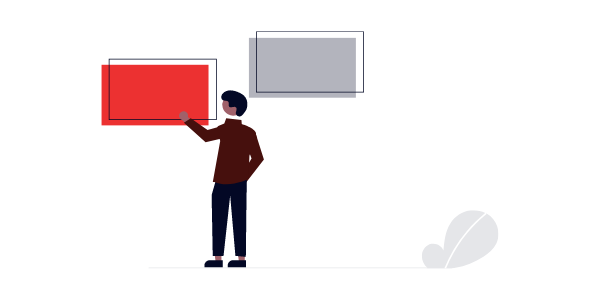
I hope there’s a spirit that I’m trying to share, which is there are other ways in all the things that you do. It’s very easy to fall in line and be like, well, we have to make a SaaS thing. We got to do it this way. They do it that way and we got to make our interface really dark. What’s cool right now and all the things, yeah, you can do that, but there are other ways to do things, and there’s something to me very exciting about trying to blaze a new path or an old path.
It’s kind of like when I went hiking recently. We were going down a well-maintained path and then there was clearly a path that shot off from that maintained path that wasn’t as maintained but used to be. You could see that there used to be a path there and it’s kind of cool to go back down that old path and see what was there.
That’s kind of what we’re doing here and I think that there’s a lot you can hopefully take away from that spirit. Be curious. Explore. Of course, you got to make it work, but also, I think there’s something to this idea of what are your luxuries and with those, can you share the largesse?
Basically, can you share from your luxury position? It is a real joy to do that and to see people light up and be so excited to get something that’s good for free. Most things that are free are kind of cheap and bad—not all things, but most things tend to be. We really didn’t cut any corners. We tried to make something great and give it away for free with no strings attached. It’s a rare experience to have something like that, and to be able to give something like that is also rare and it feels really good. So I think there’s something to that too.
A huge thank you to Jason Fried for sitting down with us and sharing his time and expertise. You can follow along with Jason on Linkedin here.


